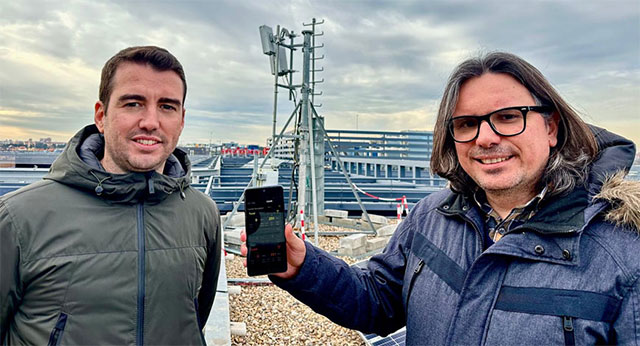5G network download speed on Xiaomi 14 Ultra reached a record level
The 'alliance' of Vodafone, Qualcomm and Xiaomi said they have successfully achieved a 5G network download speed of 1.8 gigabits per second (Gbps) recorded on commercial smartphones, specifically Xiaomi 14 Ultra. The trial was carried out in Germany and Spain, applying new technology that improves the way data and video are transmitted from radio networks over 5G to mobile devices.
Specifically, this test mainly focuses on a technology called 'Quadrature Amplitude Modulation' (QAM) 1024. This is basically an improvement on the system used today called is 256 QAM. 1024 QAM allows more data to be sent per transfer, which in turn leads to faster download speeds. Vodafone says that when this upgrade is rolled out, it will significantly increase network speeds and capacity.
The smartphone model used in the actual performance evaluation test of 1024 QAM technology is Xiaomi 14 Ultra, equipped with Snapdragon X75 5G Modern-RF System modem. The results obtained are as follows:
In Germany, the team measured a throughput improvement on a commercial network of around 20% over distances of up to 600m and at a 5G test center in Ciudad Real, Spain. The highest 5G network download speed achieved is nearly 1.8 Gbps. Theoretically, 1.8Gbps could deliver a capacity increase of up to 25% under ideal conditions.

Vodafone expects to make this technology more widely available in 2025, suitable to support situations where users are near mobile hotspots in crowded areas such as shopping malls or high streets." .
Vodafone hopes 1024 QAM will be more widely available next year, but not all 5G smartphone models support this technology, it all depends on the device's hardware configuration. Regardless, this successful test is proof of the potential that can be achieved with 5G, and that it needs to be continuously pushed to achieve the best performance.
You should read it
- Xiaomi 13 Ultra camera is not good enough to enter the top 10 DXOMARK, worse than Mi 11 Ultra
- Xiaomi Mi 10 camera and Galaxy S20 Ultra camera: which 108MP camera is better?
- 8 ways to check the network speed extremely accurately, you should not ignore it
- Limit download speed for IDM - Limit download speed on IDM
- Instructions to download beautiful widgets for Xiaomi
- 'rival' Galaxy S23 Ultra launched, easy to cause a fever because it is cheaper than both iPhone 14 and Xiaomi 13
 How to change the application arrangement style on Android 12
How to change the application arrangement style on Android 12 How to link to a specific part of a YouTube video
How to link to a specific part of a YouTube video Which Spotify subscription is best for you?
Which Spotify subscription is best for you? WhatsApp adds the ability to convert voice messages to text for Android
WhatsApp adds the ability to convert voice messages to text for Android How to fix 'We Couldn't Create a New Partition' error in Windows 10
How to fix 'We Couldn't Create a New Partition' error in Windows 10 Instructions for finding YouTube Music songs in Gemini
Instructions for finding YouTube Music songs in Gemini